
This lesson uses movement and a board game based approach for practicing action verbs.

This lesson uses movement and a board game based approach for practicing action verbs.

Teachers will be able to use this lesson virtually or in-person! This Google Slide deck lesson can also be downloaded as a PowerPoint! Speaker notes are included which make it easy for teachers or substitutes to teach this lesson!Read Aloud: Carmela Full of Wishes *Literacy Objective: Students will make predictions before and while reading a story. Students will retell a story using an appropriate beginning, middle, and end. Students will use evidence from the text to answer questions. Science Objective: We will be able to identify different parts of a plant. Art Objective: We will use materials in a new way to create texture in a work of art. Hampton Oaks Elementary School (Kari Nugent, Annie Schmidt, Lindsey Bruce, Melissa DiAscro, & Rebecca Fausett)

This guided reading of Edgar Allan Poe’s “The Cask of Amontillado” (1846) focuses on expanding vocabulary, developing student understanding of imagery and other figurative language, strengthening reading comprehension, and strengthening expository and persuasive writing skills.

Students will understand how authors organize information presented in nonfictional texts.
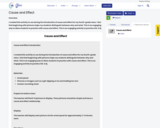
I created this activity to use during the introduction of cause and effect for my fourth-grade class. I feel that beginning with pictures helps my students distinguish between why and what. This is an engaging way to allow students to practice with cause and effect. This is an engaging activity to practice SOL 4.5j.
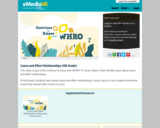
This video is part of the Continue to Know with WHRO TV series. Watch Claire Verdillo teach about cause and effect relationships.
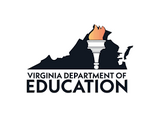
English Instructional Plan – Cause-and-Effect and its Impact on the Plot 6-8

Primary Strand
SCI.5.7.c Explain the role of energy in changing the phase of matter of a substance.
Integrated Strand
Reading 5.5a Summarize events in the plot in a fiction text
Reading 5.5m Use reading strategy of visualizing when reading fiction and nonfiction
In this lesson, students will read the mentor text What's the Matter With the Three Little Pigs? Students will summarize at stopping points throughout the book. Students will also find three examples from the book and how the matter changed.
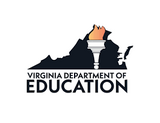
English Instructional Plan – Characterization Grade 4
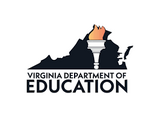
English Instructional Plan – Characterization: Character Development Grade 5
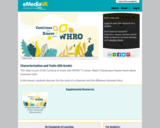
This video is part of the Continue to Know with WHRO TV series. Watch Chautauqua Hopson teach about character traits.
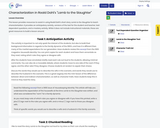
This lesson provides resources to assist in using Roald Dahl's short story Lamb to the Slaughter to teach characterization. It provides an anticipatory activity, versions of the text for the student and teacher, text-dependent questions, and a mastery activity. While it does not include instructional materials, these are great resources to build a lesson around.
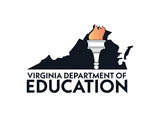
English Instructional Plan- Characters Impact on Plot 8-9
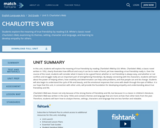
In this unit, students will explore the meaning of true friendship by reading Charlotte's Web by E.B. White. Charlotte's Web, a classic novel written in 1952, clearly illustrates how difficult and scary it can be to make a friend, yet how rewarding a true friendship really is. Over the course of the novel, students will consider what it means to be a good friend, whether or not friendship is always easy, and whether or not conflicts and struggle really are an important part of strengthening friendships. By deeply connecting with the characters, students will learn about the power of helping others, how creativity and determination can help solve problems, and that people can and do change. Students will also begin to understand the cycle of life and beauty, and the emotional responses that come with death through the eyes of Wilbur. It is our hope that this unit, in connection with other units, will provide the foundation for developing empathy and understanding about true friendship and life.
Charlotte's Web was chosen not only because of the strong theme of friendship and life, but because it is a classic in children's literature. Charlotte's Web was written in the early 1950s and contains themes and language that are more archaic than other texts from the year. Therefore, students will learn how to analyze themes, settings, characters and language that are less familiar and relatable.

3rd Students will complete a novel study on Charlotte's Web. At the end of 3 chapters, students will complete and independent assessment.
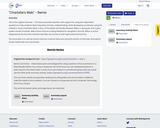
This is the original overview - This lesson provides teachers with support for using text-dependent questions to help students derive big ideas and key understandings while developing vocabulary using the children's novel, Charlotte's Web. A story of friendship and loyalty between Wilbur, a spring pic and a grey spider named Charlotte. Wilbur learns that he is being fattened for slaughter in the fall. Wilbur is at first disgusted by the fact that charlotte eats flies, but comes to both appreciate and love her.The remix plan is to use the actual novel but could be done just using this section of the book. All students would create their own summaries.

Students will understand how authors organize information presented in nonfictional texts.
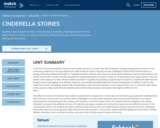
In this first unit of second grade, students read multiple versions of a classic fairy tale, Cinderella. Through reading various versions of the same story, students are not only exposed to a wide variety of cultures, but they are also challenged to think about how the culture, or setting, of the story influences the plot. In first grade fiction, students took a trip around the world, exploring a wide variety of themes and stories from all over, in order to build a foundational understanding that our world is made up of many diverse and unique cultures. This unit builds on the exposure to new cultures students received in first grade and provides an opportunity for students to explore the idea that even though cultures may appear to be different, there are many things embedded within the unique characteristics of different cultures that make them similar. Storytelling, and the role of storytelling, is one of those similarities. It is our hope that this unit, in connection with others in the sequence, helps students build empathy and understanding of the world around them.
The different versions of Cinderella help students understand the components of a fairy tale and the lessons associated with traditional fairy tales. Over the course of the unit, students will be challenged to ask and answer questions about the text and illustrations as a way of deepening their understanding of plot, setting, and characters. In the first section of the unit, students will focus deeply on the setting, characters, and plot of the different versions of Cinderella, learning to compare and contrast the nuances across different versions. In the second section of the unit, students will read Cinderella stories that vary from the traditional plot structure but still include the underlying theme that a person's actions (good or bad) influence his/her life outcomes. In this section students will dive deeply into three texts to analyze different characters' traits and how the author uses those traits to help reveal the lesson of the story.

Children will segment and blend words orally. They will also learn to sort objects by their beginning sounds: W and P. Letter formation and sound are taught.Children will practice breaking off the initial sounds in words orally and identify the corresponding letter.

Children will learn to rack the print in the nursery rhyme, understand the boundaries of words, and identify individual words.